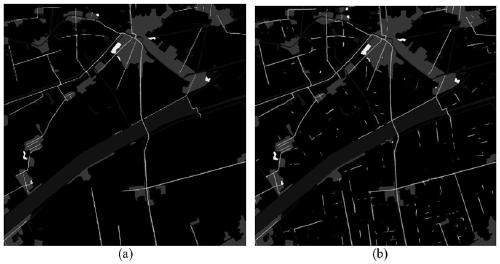Remote sensing image terrain classification method based on lightweight semantic segmentation network
A technology for remote sensing image and ground object classification, applied in the field of image processing, can solve the problems of ignoring advanced feature maps, more effective use of ground object category edge detailed processing, rough fusion method, and many network parameters, so as to reduce the amount of network parameters. , reduce the amount of calculation, reduce the effect of network structure
- Summary
- Abstract
- Description
- Claims
- Application Information
AI Technical Summary
Problems solved by technology
Method used
Image
Examples
Embodiment Construction
[0031] The embodiments and effects of the present invention will be further described below in conjunction with the accompanying drawings.
[0032] refer to figure 1 , the specific implementation steps of the present invention are as follows:
[0033] Step 1. Obtain the remote sensing image classification data set R and perform data preprocessing.
[0034] (1.1) Download the remote sensing image object classification data set R required for the experiment from the website;
[0035] The remote sensing image ground object classification dataset contains the background class and other 4 different ground object categories including buildings, roads, water bodies, and vegetation. The data set has a total of 3 grayscale images, each with a size of about 2000×2000; and 12 color images with a size of 7400×4950.
[0036] (1.2) The above data are overlapped and cut into 512×512 size image blocks, the overlap size is 128, and the obtained image blocks are randomly divided into 80% tra...
PUM
 Login to View More
Login to View More Abstract
Description
Claims
Application Information
 Login to View More
Login to View More - R&D
- Intellectual Property
- Life Sciences
- Materials
- Tech Scout
- Unparalleled Data Quality
- Higher Quality Content
- 60% Fewer Hallucinations
Browse by: Latest US Patents, China's latest patents, Technical Efficacy Thesaurus, Application Domain, Technology Topic, Popular Technical Reports.
© 2025 PatSnap. All rights reserved.Legal|Privacy policy|Modern Slavery Act Transparency Statement|Sitemap|About US| Contact US: help@patsnap.com



